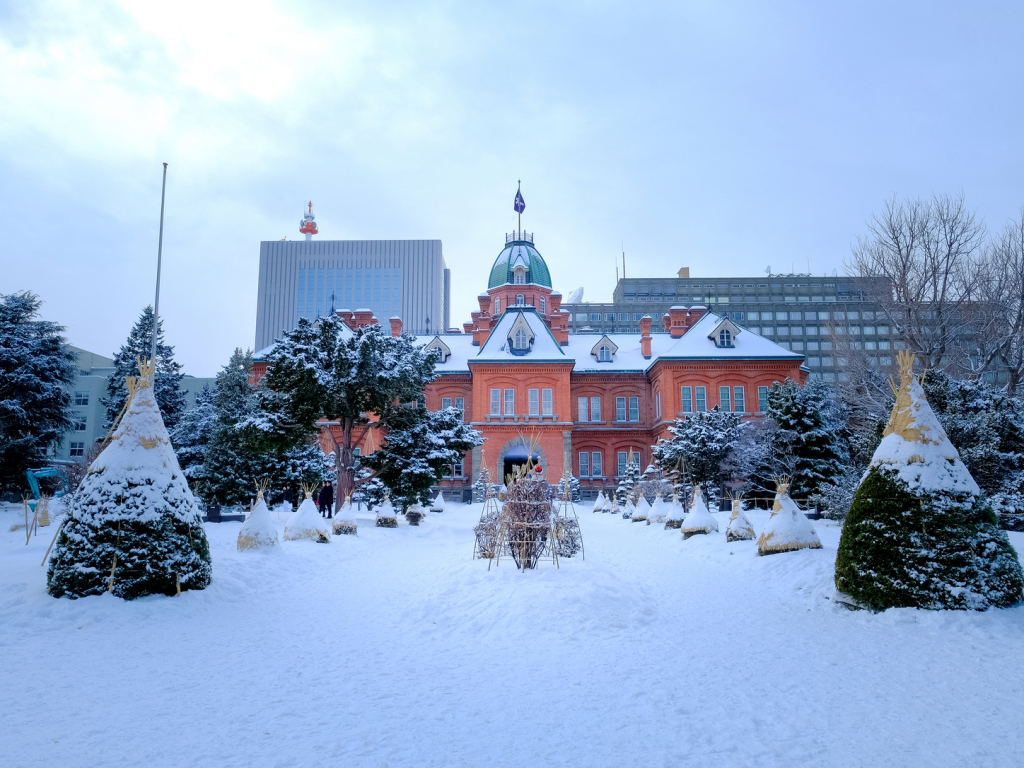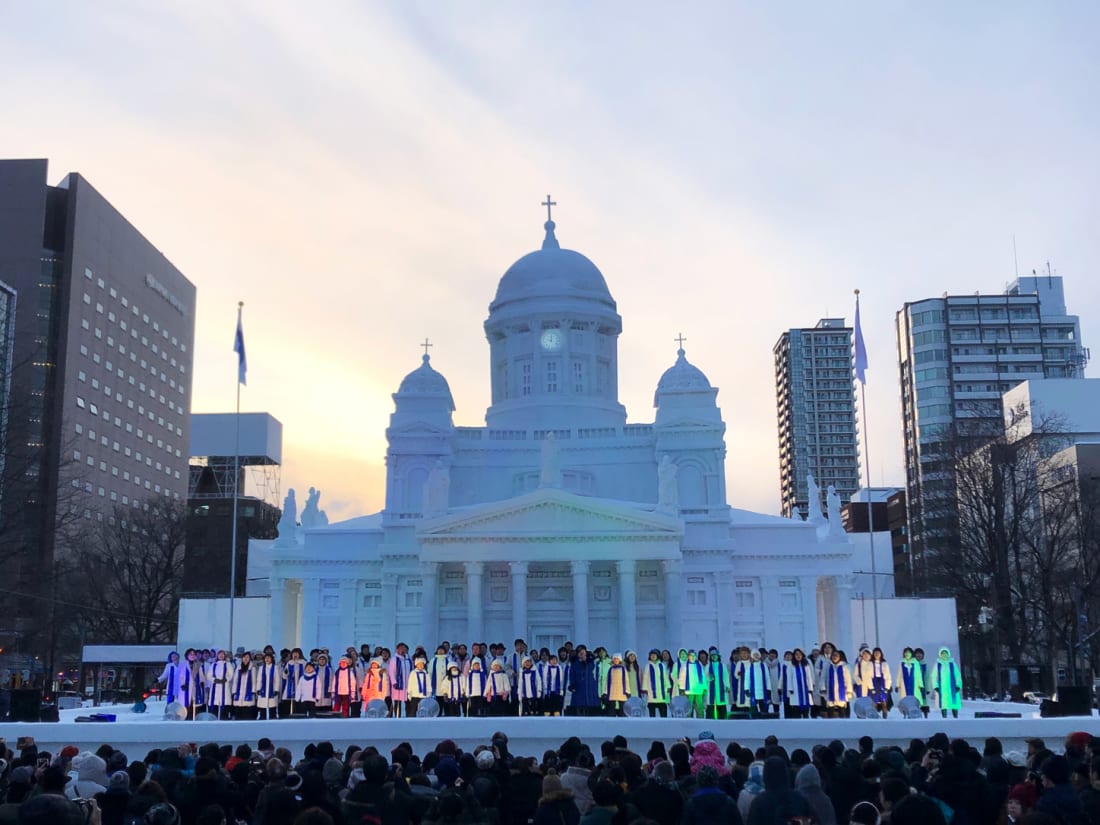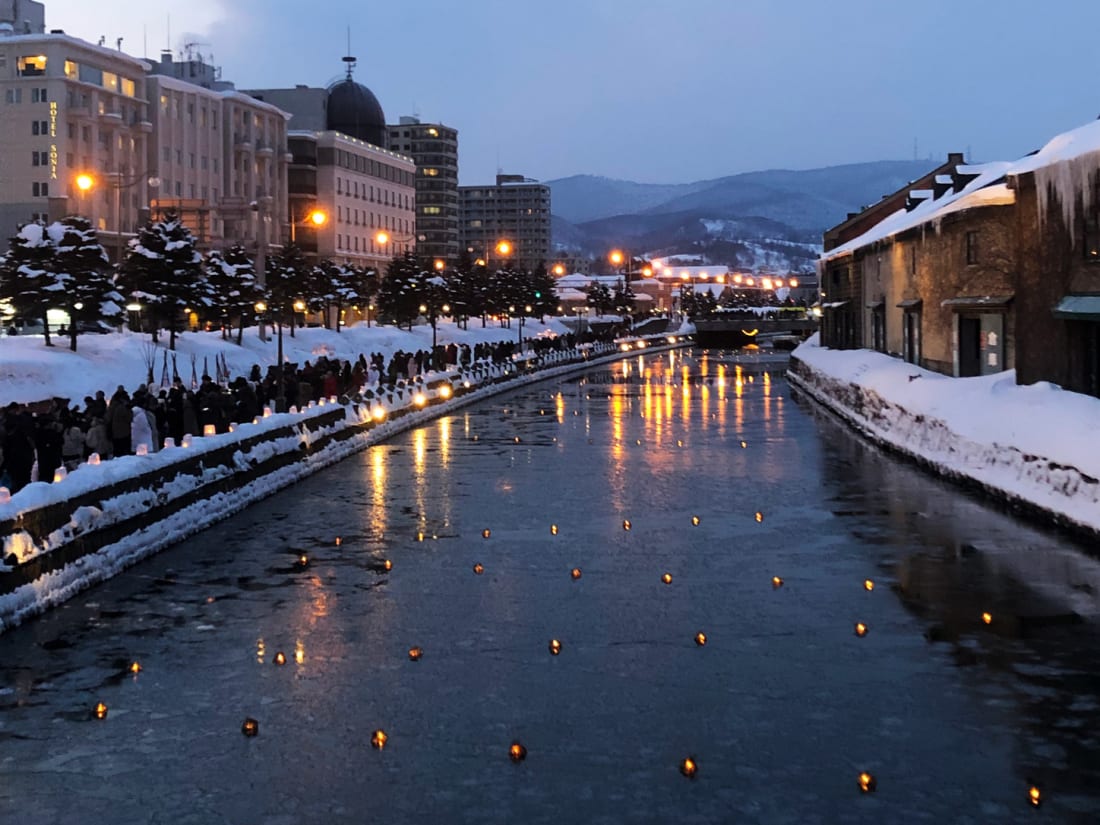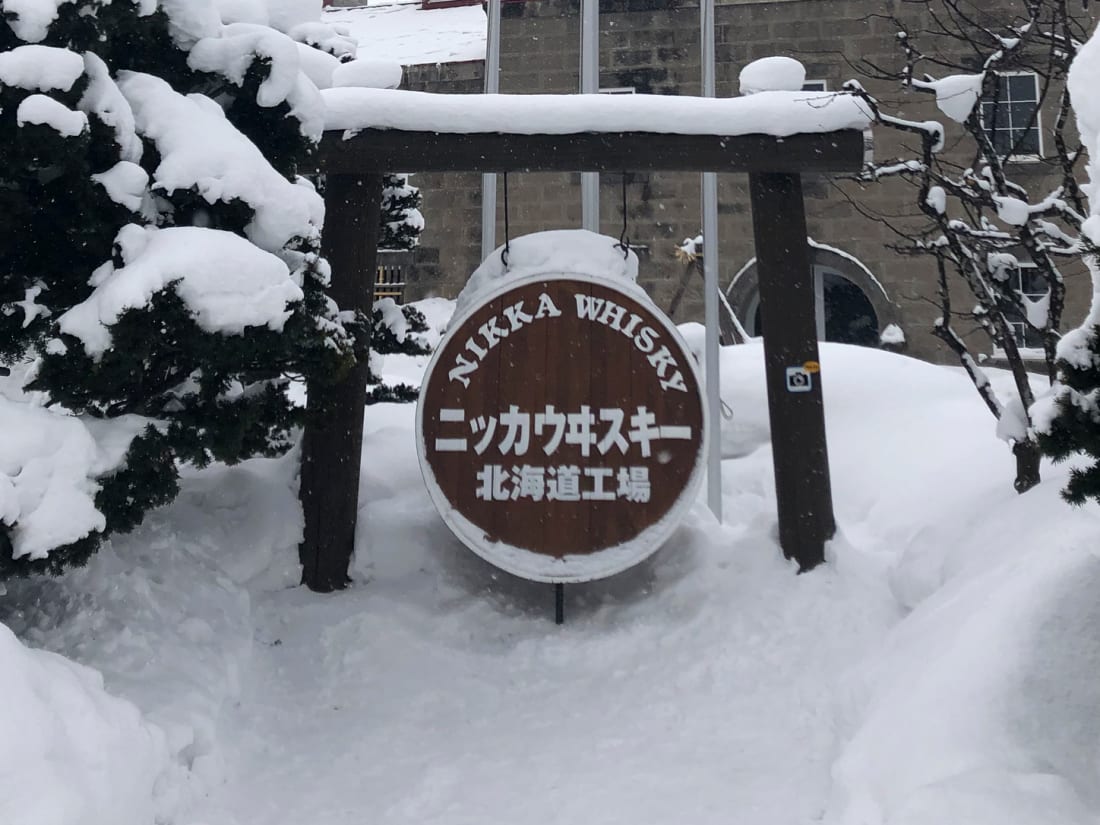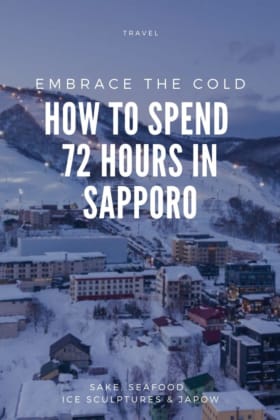The native Inuit tribe of North America’s Arctic region has 50 words for snow but on Japan’s northernmost island of Hokkaido the locals only need one: Japow. This portmanteau of “Japan” and “powder” has become a calling card for the pristine ski resorts of Hokkaido, which are attracting the attention of more and more international powder hounds every year.
While the ski slopes garner the international headlines, Japan vacationers have been heading north for decades to experience Hokkaido’s homegrown attractions and industries, including Sapporo’s annual snow festival, Yoichi’s fabled whisky distillery and mouthwatering fresh seafood and sake that can be found across the region.
“The Hokkaido government has been working on an inbound acceleration project in cooperation with private sectors to realize our goal to make Hokkaido the most loved tourist destination,” says Akemi Kawamura, PR rep for the Hokkaido government tourism division.
Snow Festivals and Succulent Seafood in Sapporo
Driving to Hokkaido’s capital city of Sapporo from the New Chitose Airport one February afternoon, the roads are lined with snow mounds towering over delivery trucks. Under the weight of the snow, the branches of evergreen trees bow like an obliging geisha.
The bus drives across the Toyohira River, where salmon come to spawn every autumn, and passes by the historic Sapporo Breweries factory, Japan’s oldest brand of beer. The red brick building is emblazoned with a faded image of the red polar star, which is now the company’s logo. When the factory was built nearly 150 years ago, the star was the symbol of the Hokkaido Development Commission, which stamped the star on every building that fell under the department’s purview.
As the bus pulls to a stop in downtown Sapporo, the guide warns visitors to “walk like a penguin” to avoid slipping on the snow-crusted sidewalks. Once unloaded, the first stop is Sapporo’s famous Snow Festival. Usually taking place from late January to early February, talented Japanese and international sculptors descend upon Odori Park, located across 1.5km of land in the heart of Sapporo, and carve gigantic creations from snow and ice.
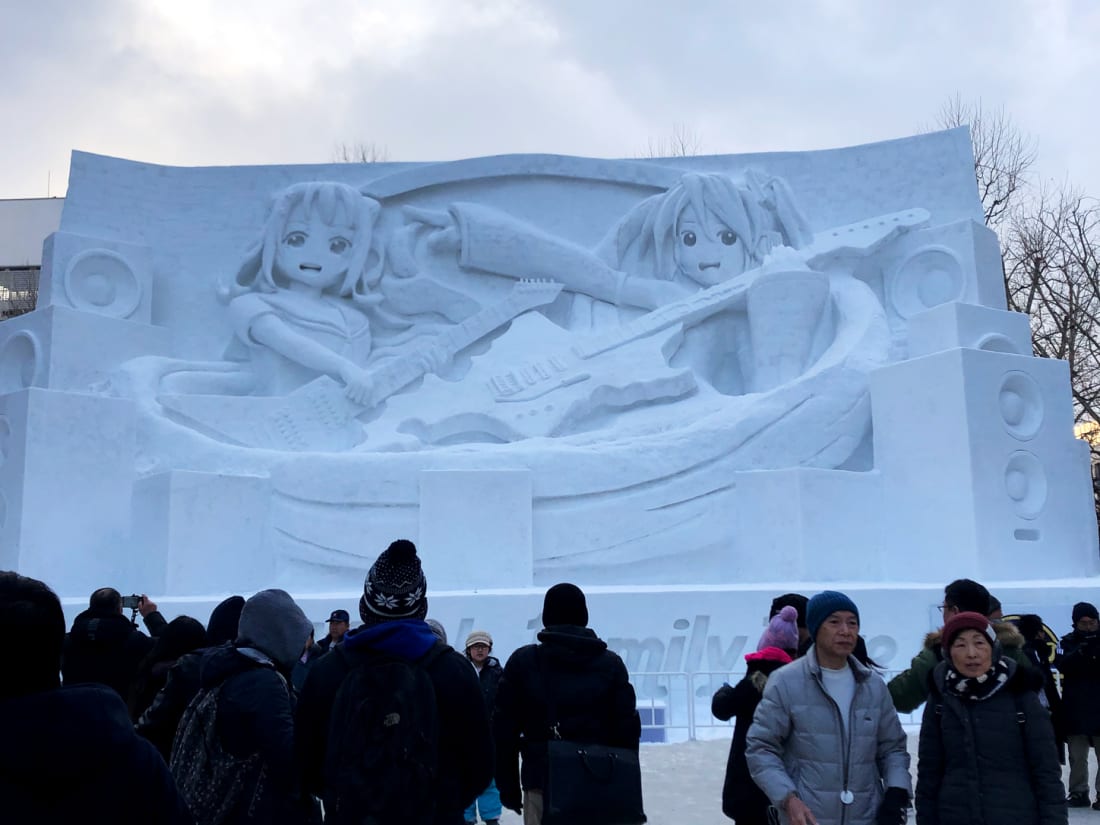
Starting from the Sapporo TV Tower at the east end of Odori Park, visitors pass by a stall selling Vladimir Putin merchandise and another shop offering wines of the world before reaching an artificial ski slope called Park Air, where snowboarders loop-the-loop while music from ‘90s punk-pop band Offspring blares through giant speakers.
Continue following the pack of foreign tourists, young girls in black Thrasher jackets and tired parents carrying sleeping children past food vendors hawking udon, rice bowls and beef skewers to reach the monumental ice sculptures. The star of the show is the statue of virtual pop idol Hatsune Miku, where tourists take group photos to the tunes of Blondie’s “Heart of Glass.”
In front of an ice replica of the Helsinki Cathedral (commemorating 100 years of diplomatic relations between Finland and Japan), a children’s choir dressed in white and blue sings gospel hymns. Meanwhile, a giant Cup Noodle container made from snow opens a lid to release a billowing cloud of steam.
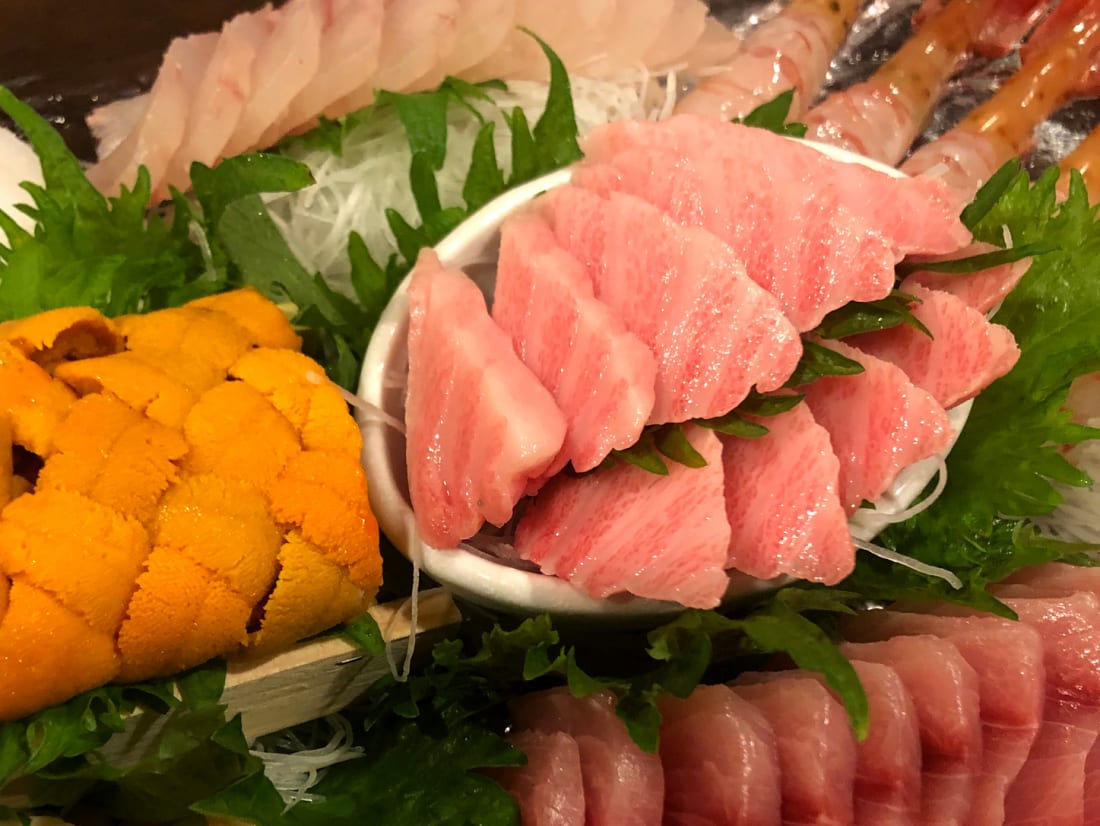
To warm up afterwards, head to Aji No Takahashi restaurant for a traditional Sapporo feast. Icebergs floating across the Sea of Okhotsk carry plankton to Hokkaido’s coast, nourishing the fertile fishing grounds on the continental shelves spreading far out to sea. As such the spread of sashimi served at Aji no Takahashi is a bounty of succulent tuna, yellowtail, herring, octopus, scallops, clams and sea urchin. The baked Hokkaido potato steeped in Hokkaido butter is simply indulgent, while the firm soba noodles doused in seaweed and green onion, with a dollop of fresh wasabi, is a nice refresher before heading back out into the snow.
For accommodations in Sapporo, consider the Hotel Monterey Edelhof. This homage to 19th-century Vienna offers comfortable beds, excellent views and a lavish breakfast buffet complete with Japanese and Western staples, including an omelet bar and waffle station.
Sake, Shopping and Sweets in Otaru
For the second day of your Hokkaido excursion head to the scenic harbor city of Otaru. An hour-long drive west from Sapporo takes you past the snow-capped Mount Tengu on your left and the steel blue waters of the Ishikari Bay on your right. As the bus reaches Otaru, every private ski chalet has a special parking spot for its blue Yamaha snow blower.
During the late 19th and early 20th centuries when Japan rapidly Westernized, Otaru blossomed as a prominent port city and center of international trade, sending wares as far away as London. Canals were built to accommodate the new red brick warehouses, and the townscape took on unique blend of Japanese and Western architectural influence.
The preserved Otaru Canal has become the town’s most visited tourist destination. Originally built in 1923, the canal and the surrounding area is now home to restaurants, boutique shops, historical buildings and museums – all teeming with tourists.
Visit the Kitaichi Glass Otaru sales outlet and café to experience Otaru’s local craftsmanship. When the Hokkaido-born glass-making technique originated in 1901 it was used for oil lamps. (Today 160 of these lamps provide lighting for the photogenic coffee shop.) As technology evolved and demand declined, the glassware became more ornamental, and now kitaichi kiriko sake glasses, soy sauce bottles and other goods are highly sought after by collectors.
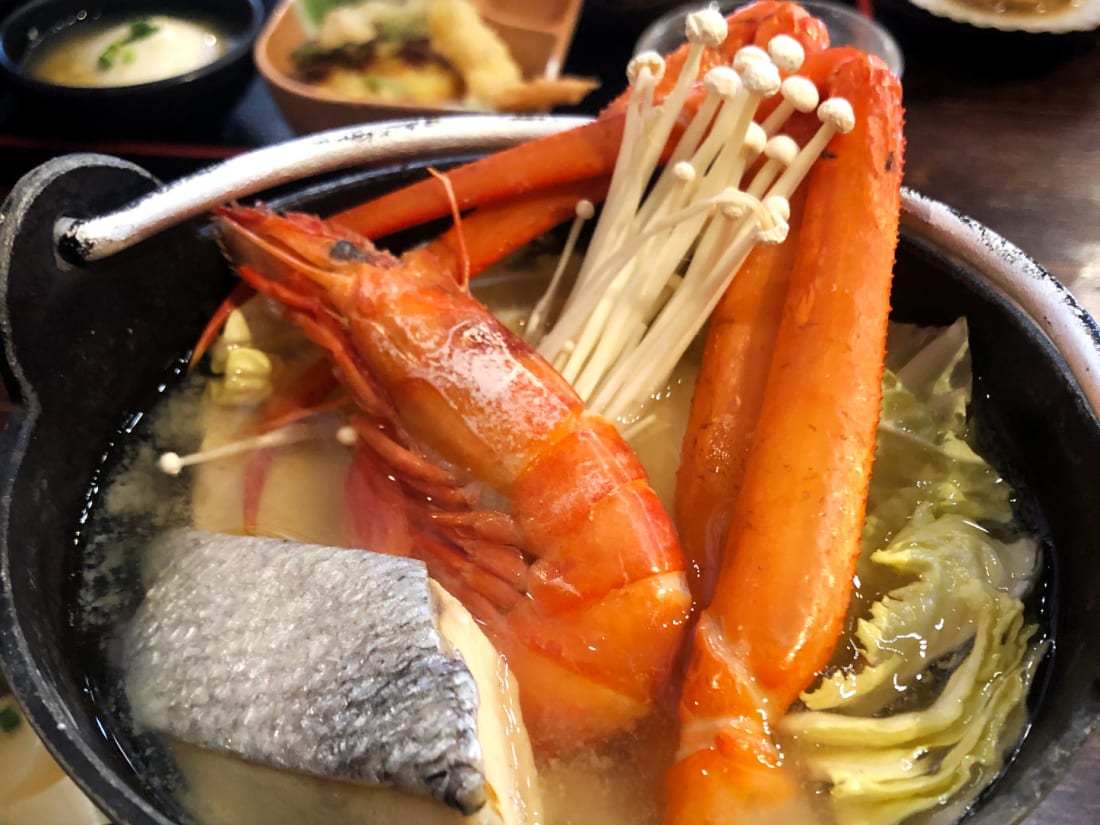
At Tsukushi Makita, a second-generation confectionery shop in Otaru, try your hand at making traditional – and beautiful – sweets such as nerikiri, the chrysanthemum-shaped delicacy filled with red bean paste. For lunch, the Otaru Canal Restaurant Hikari, located inside the venerated red brick warehouses that run along the canal, offers delicious seafood, including locally caught prawn and crab legs steeped in miso soup.
Nearby the Otura Canal is Tanaka Sake Brewery, where guests can receive a thorough tour of the facility to witness every facet of the sake-brewing process, from rice-steaming to rice-mashing to tasting. Made from 100 percent Hokkaido grown rice and fresh water captured from the snow melt, the premium junmai daiginjo sake produced at the fourth-generation brewery is made in small quantities, and as such is difficult to find outside Otaru.
Get back to Otaru Canal by nightfall in order to witness the gas lamp illuminations that create an ethereal scene. In February, during the Otaru Snow Light Festival, candles encapsulated in glass lamps float down the canal. It is estimated that 500,000 people come to witness this annual event, so be sure to arrive while it’s still daylight to get a good spot for a photo op.
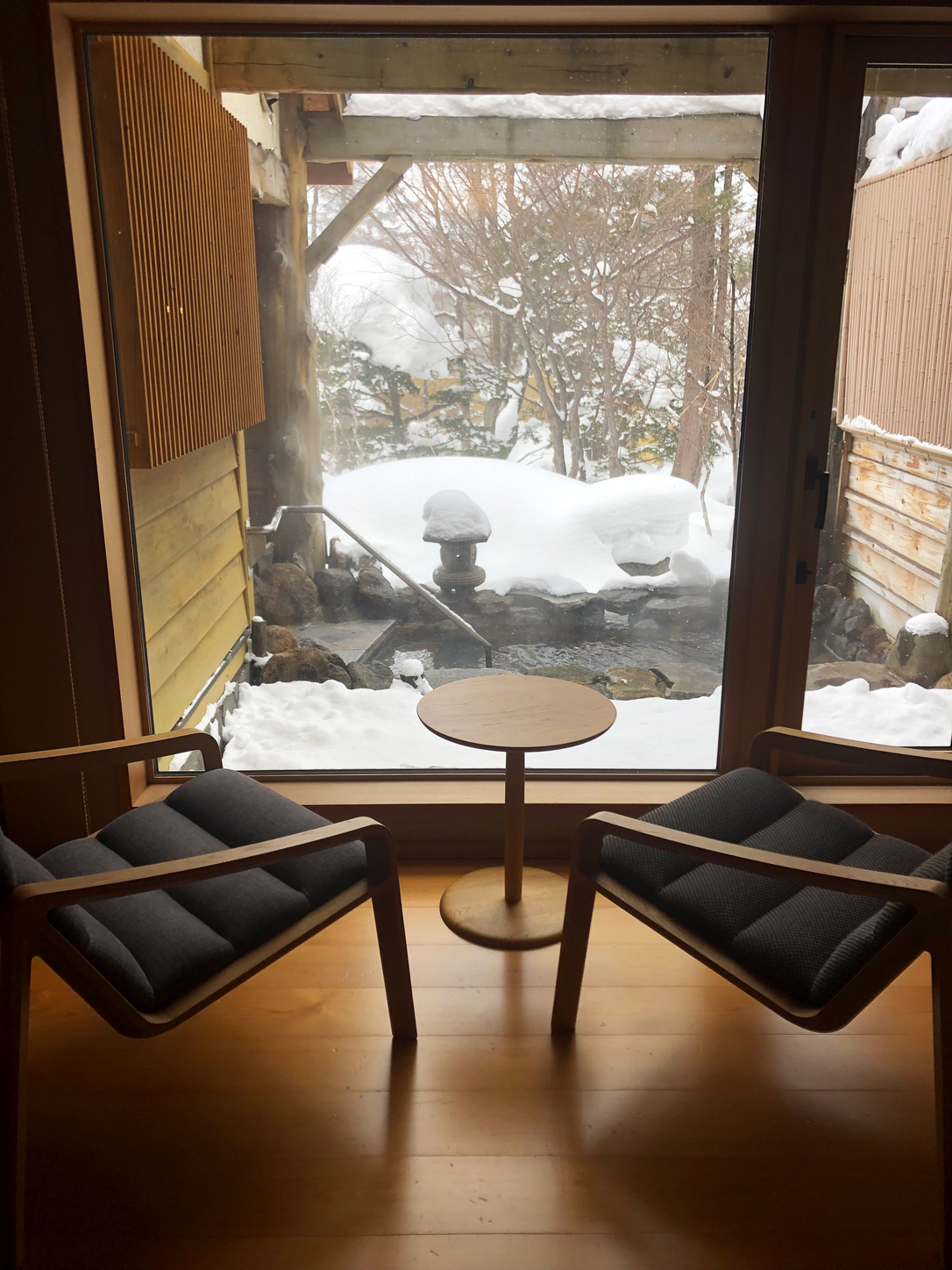
For accommodation, the Otaru Kourakuen traditional Japanese inn offers a tranquil respite. Standing at a bar next to an authentic Japanese tea room, proprietor Yoshihiro Yoneyama vigorously whips up a cup of bitter yet refreshing matcha green tea.
The swath of land where the ryokan is located – encompassing the same area as Tokyo Dome – was owned by Yoneyama’s grandfather, an iron magnate from Niigata. The land was groomed to radiate beauty in every season, with hydrangeas and wisterias in the summer, colorful maple trees in the autumn, blankets of white snow in the winter and, the main draw, 200 blooming cherry trees in spring (full bloom in Hokkaido is in May). Yoneyama’s father wanted to share this beauty with others, and so he opened the garden to the public, and built the ryokan to accommodate guests.
The inn provides spacious, smartly decorated traditional rooms with tatami-mat floors and kaiseki meals. Western-style rooms are also available, as are 24 rooms providing a private hot springs bath enriched with sodium that exfoliates the skin naturally. With several large indoor and open-air baths, a stone sauna and even a ping pong recreation room, Otaru Kourakuen sets the standard for Hokkaido’s ryokan.
Whisky, Wine and Japow
Why not start the day with a nip of whisky? More specifically, Nikka Whisky, whose Yoichi 20 Year Old was voted the best single malt in the world in 2008.
After spending two years in Scotland learning how to make authentic whisky, and another decade helping Suntory build Japan’s first whisky brand, Nikka Whisky founder Masataka Taketsuru opened his own distillery in 1934. He chose to build in Yoichi, Hokkaido, where the quality of air is similar to Scotland, and there is enough suitable farmland to harvest peat.
Visitors can tour the Nikka Whisky distillery in Yoichi. Seven three story-tall copper stills are located in the still house, where the smell of peat, charcoal and whisky permeates the air. One noticeably shorter still, no longer in operation, is the original still installed by Taketsuru. Also located on the expansive grounds are the mash house, kiln tower, Taketsuru’s former office and the home he shared with his Scottish wife Rita, who came to pop culture prominence after her story was romanticized in a 2014 NHK drama.
After sampling Nikka’s best whiskies at the museum bar, it’s time for some wine. Hokkaido has quietly made a name for itself among wine aficionados, becoming certified as a special district for wine in 2011, with local officials dreaming that the agricultural area surrounding Yoichi will one day be called the Napa Valley of Japan.
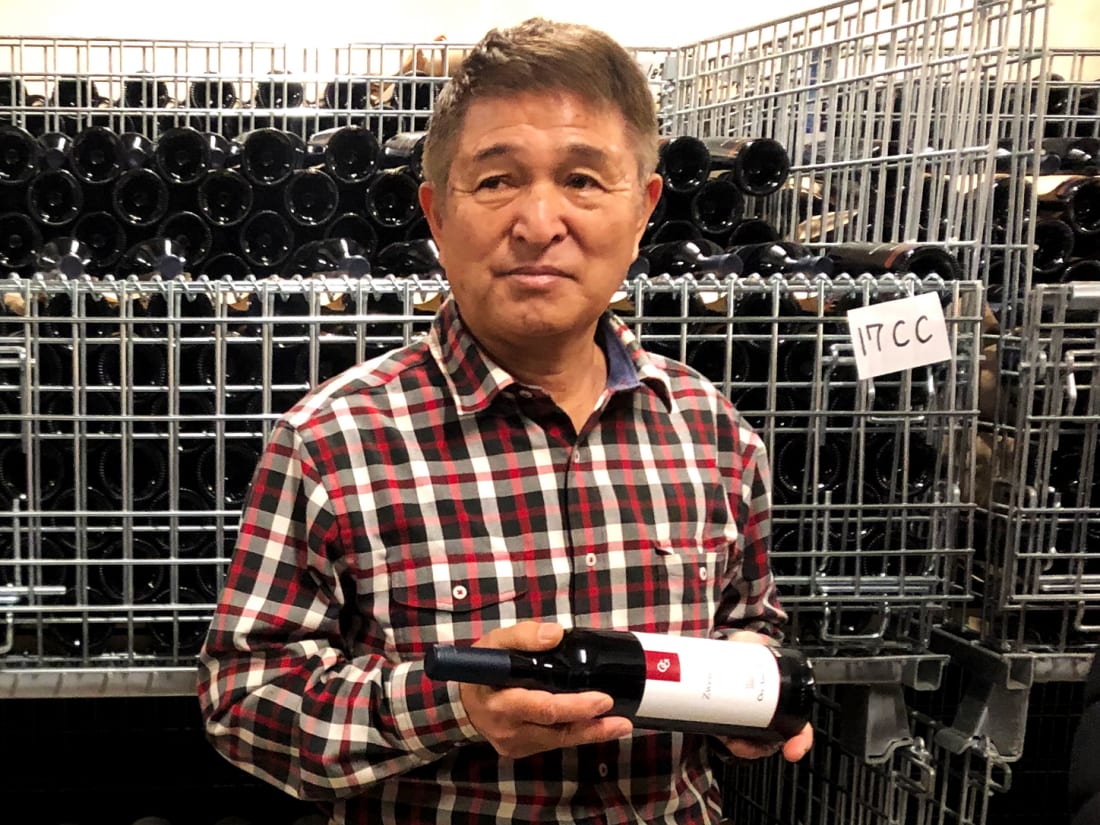
Of the 30 wineries in Hokkaido, 11 are located in Yoichi. The availability and diversity of land in Yoichi has led to suitable environs for vineyards, mainly growing sturdy German grape varieties such as Kerner and Acolon.
OcciGabi Winery in Yoichi opened in 2012 with 10 hectares of vineyards. OcciGabi produces a relatively small amount of wine annually, and bottles are hard to find outside Hokkaido. As such, visitors to the winery are treated to warm hospitality and luxury dining for lunch or dinner.
With a nice warm buzz, it is time to see what all the japow fuss is about and head to Niseko, Japan’s mecca for fresh powder snow. At 1,308 meters, the snow-capped active volcano Mount Niseko Annupuri in Kutchan, Hokkaido, is home to four ski areas operating a total of 30 lifts. The four areas combined are known as Niseko United, and all can be accessed by a single lift pass.
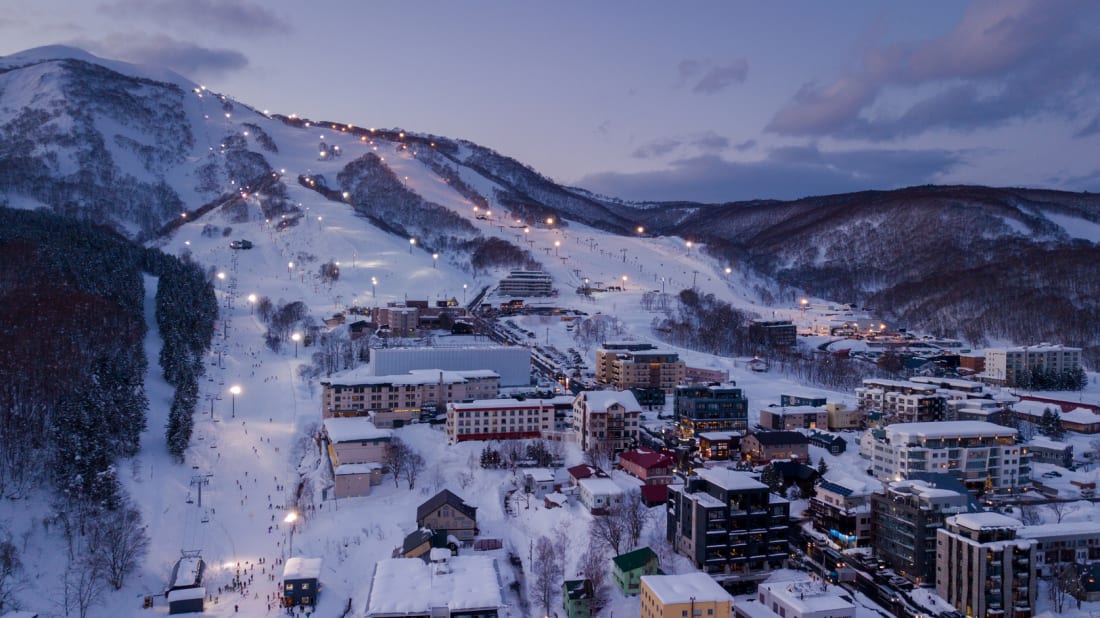
Photo: Shutterstock
Today there are more than 200 foreign business owners in Kutchan. A brand new Park Hyatt Hotel will be completed in December 2019. By 2030 a bullet train line will end at Kutchan Station. Niseko is unofficially appointed as the Olympic alpine competition areas in Sapporo’s bid for the 2030 Winter Olympics.
Once the area’s main industries were mining phosphorous for matchheads and providing bamboo for particle board. In the 1960s the lifts used to haul these materials down from the mountains were retrofitted as ski lifts. As Japan’s domestic tourism struggled following the end of the 1980s bubble era, Hokkaido’s inbound tourism industry began to grow, particularly from Australian skiers.
“Australians are early adopters. They are adventurous,” says Colin Hackworth, director of Japan Harmony Resort. “They are a long way from anywhere, so Australians are happy to hop on a plane and go somewhere.”
Hokkaido’s overall tourism numbers have grown from 560,000 in 2011 to 2.8 million visitors in 2017. In the last three years, Hokkaido’s percentage of Chinese visitors has risen from 19 to 31 percent. Hackworth says China has made ski sports compulsory in school, with the aim of growing their number of snow sports participants from 15 million to 300 million by the 2022 Beijing Winter Olympics. Of China’s 703 ski resorts, Hackworth says only 10 have more than 500 meters of vertical.
“You really need about 800 meters of vertical to call yourself a ski resort. They are all bunny hills in China, and all with manmade snow,” says Hackworth. “So where do you think 1.4 billion people are going to go when they want to ski in real snow? I say, of course, they are all going to come here because we are in the neighborhood…. We are not seeing the finish of something. We are seeing the start of something.”
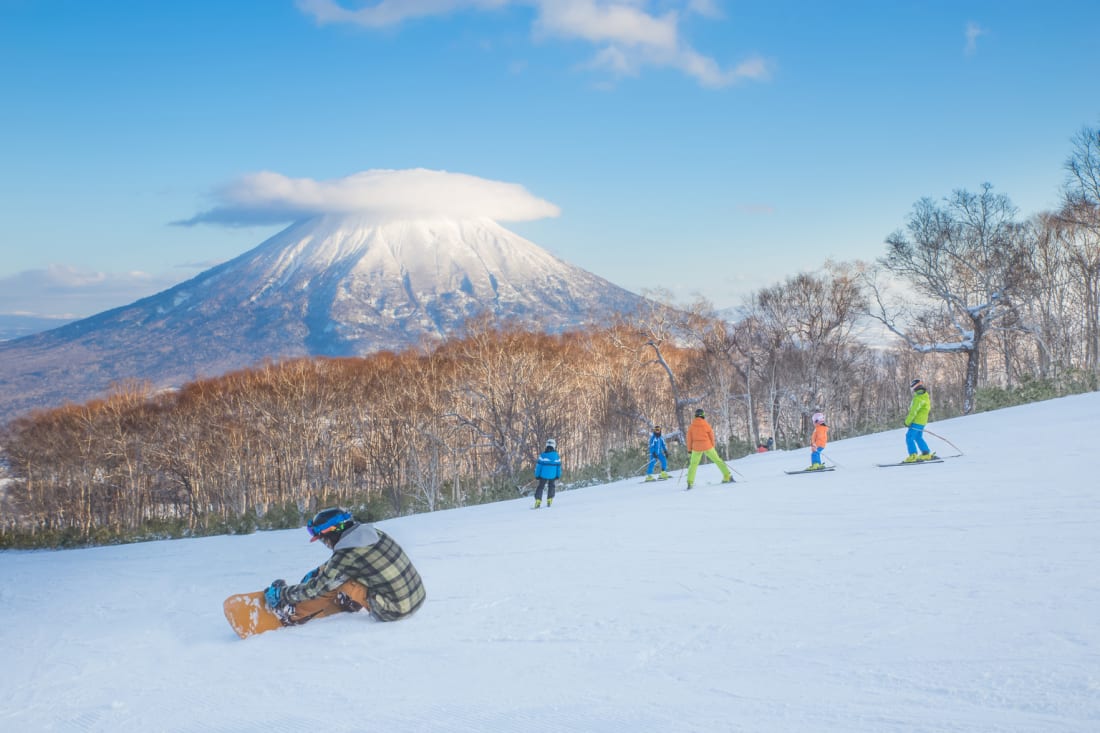
Photo: Shutterstock
Driving into Niseko, the snowdrifts reach door awnings. Lampposts stick out of the roadside snow banks like submarine periscopes. The bus drives by a massive development surrounded by scaffolding, an empty lot with a large sign for a new modern development titled Aura Niseko, a line of food trucks parked outside an art gallery, and then there is an assumedly Australian skier waiting at a street corner wearing only a T-shirt with cut-off sleeves.
Hitting the slopes at the ski area Niseko Village, the fluffy white snow that continuously falls from the sky comes as advertised. At 175 meters above sea level, it snows virtually every day during Niseko’s ski season, which runs from November 23 through May 6. The fresh powder makes it easy to turn, allowing beginning skiers to learn with confidence, and novice skiers to feel like experts. Meanwhile, the hardcore skiers can head off-piste, something they can’t do in the European Alps.
Skiing and snowboarding isn’t the only attraction to Niseko. In the summer, Niseko Adventure Centre (NAC) offers rafting trips on river waters made wild by the snow melt. NAC also provides an adventure park, trekking and mountain bike trekking. Hiking is particularly beautiful in the spring when the mountain cherry blossoms are in bloom and in the fall when the white birch trees turn gold and red.
For accommodations, the Green Leaf Niseko Village can outfit any skier and snowboarder with full gear and the ski lift is directly outside the door. Besides comfortable rooms, complete breakfast, lunch and dinner buffets that satisfy the most hearty of appetites and a cozy full-service bar, Green Leaf offers rejuvenating indoor and open-air hot springs baths and a thermal pool.
Resilient Hokkaido
On September 6, 2018 the southern area of Hokkaido near Atsuma was struck by Hokkaido’s largest recorded earthquake. The catastrophe resulted in nearly 3 million households losing electricity and landslides that killed 42 people and destroyed more than 450 buildings.
In the immediate aftermath, Hokkaido’s tourism figures dropped 50 percent as compared to the previous year. However, within two weeks the damaged infrastructure was rebuilt. By December of 2018, tourism numbers were 5 percent higher than the previous year.
Learn more about Hokkaido’s diverse and rich tourist destinations at en.visit.hokkaido. The site also provides the latest information and guidance for domestic and international visitors regarding social distancing measures and the ongoing coronavirus pandemic.
Updated On January 12, 2023

